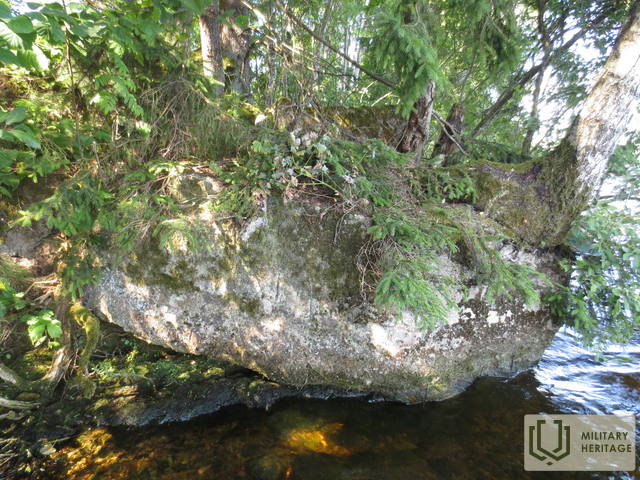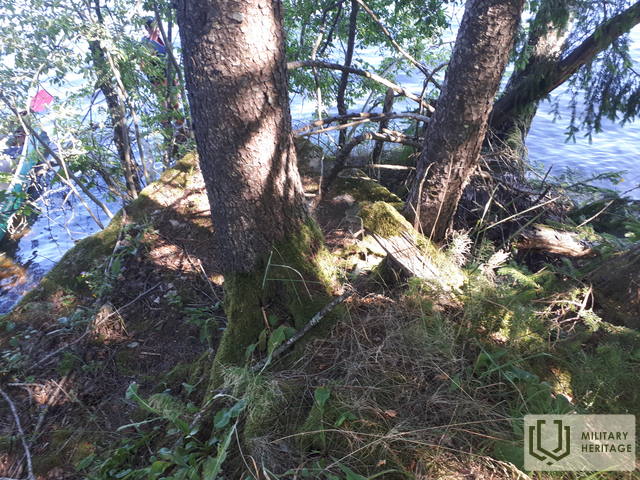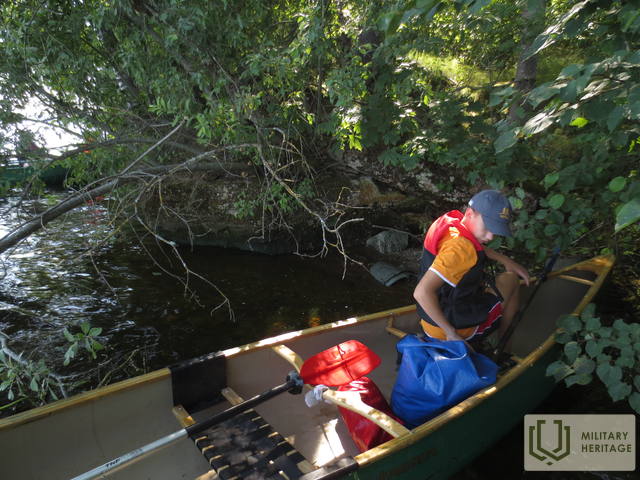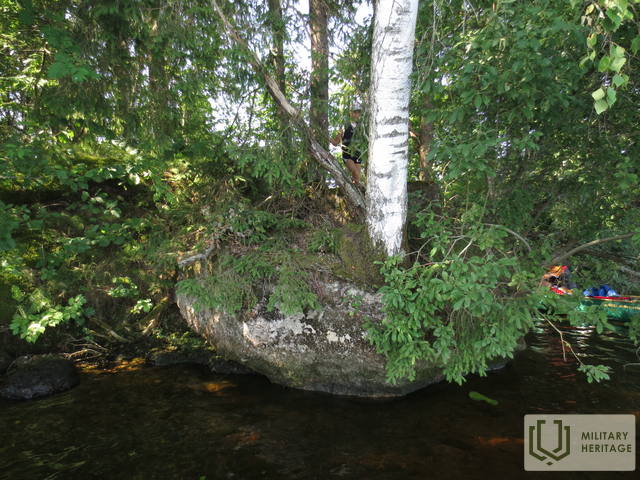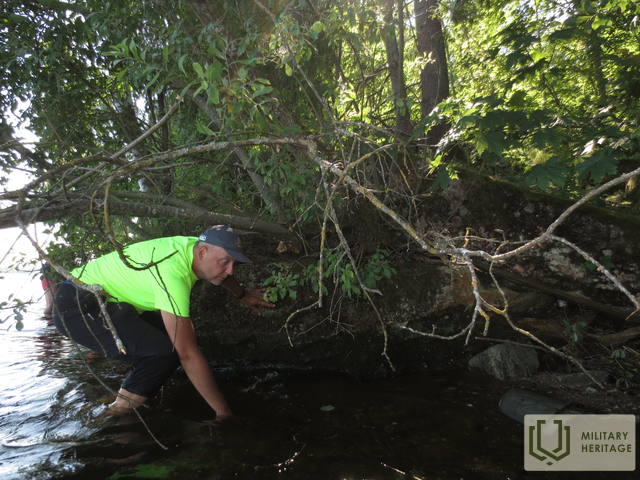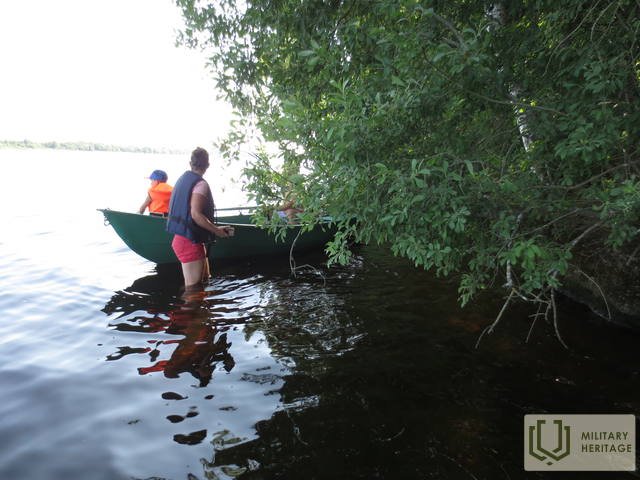Remains of a German army concrete fire point on the shore of the Ķegums HPP reservoir opposite Silapūpėžys
Fortification


 59
59



Located about 0.1 km east of the Ķegums HPP reservoir bay near Silapūpēži, towards Jaunjelgava. The fire point has partially sunk into the water, overgrown with trees, bushes and other vegetation, and to the uninitiated, from a greater distance from the water side, it may resemble a larger stone. One of the landmarks is a birch tree growing on it. This is one of the fire points of the German army's World War I defense line on the left bank of the Daugava, which can be more or less traced along the entire length of the left bank of the Daugava. The aforementioned defense line is a large-scale military system that has not yet been fully evaluated as a single entity. The remains of the fire point can be viewed by boating along the Ķegums HPP. About 150 m east of the Daugava bank, the remains of another fire point have sunk into the water.
Related topics
Related stories
Saving the bridge over the Nega River from being blown up
During the German retreat in 1944, many important objects were blown up and it was very difficult to prevent this, however, there are also stories about miraculous incidents when the courage of local residents and the tolerance of a soldier allow places that are important to the locals to be saved, and the salmon survived. One of the stories is this one about a discussion between a housewife and a German soldier that saved an entire bridge from being blown up.
Efforts to prevent the explosion of the Ķegums HPP
During World War II, when the armies retreated, a large number of militarily and logistically important facilities in Latvia were blown up so that these resources would not be left for the enemy. Such facilities were also in the vicinity of Ķegums, where one of the most important facilities is the Ķegums HPP, which, thanks to the efforts and efforts of its employees, was not completely destroyed.




